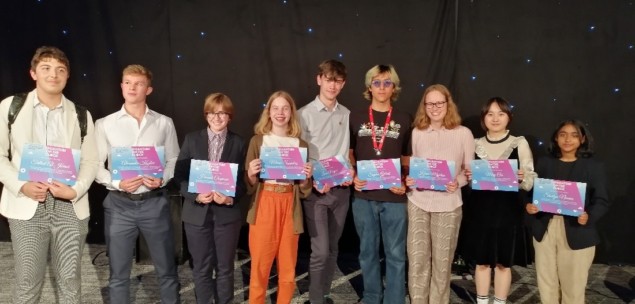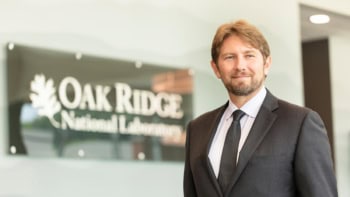
Could you explain a complex concept from quantum physics in just three minutes – and hold the attention of your audience while you did it?
This was the premise of the inaugural “Quantum on the Clock” competition, which challenged A-level and equivalent students from across the UK and Ireland to create creative, clear, engaging and accurate short videos on any aspect of quantum science and technology. The winners of the competition received cash prizes donated by quantum companies and institutions, plus an expenses-paid trip to the Photon 2022 conference in Nottingham and – for the recipients of the “best individual” and “best team” video awards – a year’s subscription to Physics World magazine.
As one of the competition’s 17 expert judges (a group that also included such luminaries as the “quantum ballerina” Merrit Moore, the science broadcaster Jim Al-Khalili, and the quantum YouTuber Mithuna Yoganathan), I got a sneak preview of the winning entries. Some of my favourites were Hannah Chapman’s rhyming animation on the Copenhagen and Everett interpretations of quantum mechanics (the “best individual video” winner) and May Cui and Margaret Liu’s clear, well-presented Q&A on blackbody radiation (“best team video”). I also had a soft spot for Olympia Andipa’s video about quantum tunnelling, which reinforced its message with a catchy chorus and picked up a “highly commended” award.
The competition was organized by the Institute of Physics’ QQQ group (Quantum Optics, Quantum Information and Quantum Control) as a means of getting more young people engaged in the growing field of quantum technology. With 124 entries to choose from, picking the winners was a challenge. Many students used graphics or animations in their videos, and several were slick enough to appear professionally produced – something that caught the attention of judge Andrew Hanson, the outreach manager at the UK’s National Physical Laboratory (NPL). “As a physicist film maker working in science communication, I was very impressed with the depth of understanding and clarity of explanation in many of the videos,” Hanson says. “The students’ enthusiasm and technical excellence made it a pleasure to watch every one of them.”

Quantum tunnelling video bags teen $250,000 scholarship, how to win a horse race
It wasn’t all about flashy tech, though. Sophia Gilbert and Karna Majdian received NPL’s “most creative” award for a news-report-spoofing video that relied on humour more than graphics to get its message across. Maisie Saunders and Lewis Payne won the IBM Quantum prize for “most engaging” video using nothing more than cartoons drawn on pieces of paper. And my hat is well and truly off to one of the runners-up, Diane de Nonneville, for choosing to make her video on pilot-wave theory. This is a topic that many professional physicists, never mind students, would be hard-pressed to explain, and I definitely learned something new from watching it.
The videos of all the winners, runners-up and highly commended entrants are now available on the Institute of Physics’ YouTube channel. Check them out for a glimpse into the future of quantum science – and science communication.



